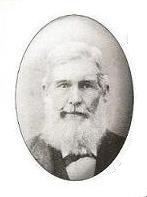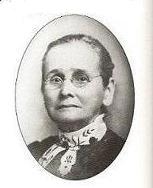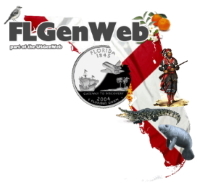Cities
Clermont
Herring Hooks of Americas, Georgia, discovered the lakes and hills of Clermont during a 1874 fishing trip. His sons, John, Charley, William and Robert settled in the area. In 1878, George Gano and his son Archibald came to the area from New Jersey. George was an expert mill operator. He built many of the older homes in Clermont, Groveland and Mascotte. First black settlers in Clermont were a farmer named James Townsend and his wife Sally, a beloved midwife. Clermont was incorporated in 1891, but the charter was cancelled in 1895 following the Big Freeze and then reincorporated in 1916. The community was named after Clermont, France. Clermont Historic Village is located at 480 W Avenue, Clermont FL. It consists of several buildings which played a role in the town's establishment. It includes a Train Depot which was built on the site in 1925.
Eustis
It was first named Highlands, then Pendryville, and finally Lake Eustis in 1825 for General Abraham Eustis. General Eustis was prominent in the Sinole Wars. In the 1850's the U.S. opened up the area for homesteading. Among the earlier settlers was Guilford David Clifford, who established a store and began the first mail service. Guilford David Clifford and Smith built the first general store. He kept his lakefront general store open after the Big Freeze and extended credit until people could recover. The first homes were those of D.W. Herrick, A.D. Herrick, and Henry Key. In 1878, Eustis's first telegraph line connected Eustis, Leesburg and Sanford. Eustis was incorporated in 1883.
Fruitland Park
Fruitland Park predates the American Civil War. It was originally called Gardenia. The earliest settler was M. Calvin Lee, of the Evander Lee family of Leesburg. In 1874, Josiah Akon Lee (b. 1903) became registrar of the Land Office and encouraged people to settle in this area. By the 1800s, settlers had come from Ohio, Illinois, Maine and England. A. P. Bosanquet came from England and built a home on Zephyr Lake, called Zephyr Hall. In 1863, R.F.E. Cooke, born in London, immigrated to Florida with a group of colonists.. Cooke weathered the Big Freeze of 1894-1895, and became a banker and businessman and a prime mover in Lake County. Cooke married twice, first to Ada Gibb of London and in 1923 to Margaret Grace. He died March 1934. Major Orlando P. Rooks and his wife headed south in 1877 and built a home on Crystal Lake. The State of Florida granted a Charter to the City of Fruitland Park in 1927.
Groveland
In 1899, Elliott E. Edge, bought the pine lands and turpentine stills of brother T.M. and C.C. The year Groveland was founded is in question, but in 1922 the residents voted to change the city's name from Taylorville to Groveland.
Leesburg
Leesburg is the oldest and largest city in Lake County. The city claims 1857 as its birthday. This was the year that the city's namesake, Evander Lee and his family came to the area. Lee was the area's first permanent settler; however, in 1843 Thomas Robertson and his 21-year old son, John Marmaduke Robertson came to what would become Leesurg. They lived 11 years in what is now the heart of Leesburg. Then Thomas sold out and moved to Moss Bluff. John later sold his property and founded the nearby community of Whitney. In 1857, John Butler Dabney and his wife, Mackey were the first black settlers to settle in Leesburg. In 1868, John Morgan Dabney became the first black teacher in Lake County. Leeburg was made the county seat of Sumter County. The city was incorporated in 1875 and J.G. Wallace, was the first mayor.. The Works Project Corporation completed Venetian Gardens in 1930, which has circular canals, separated by flower gardens and crossed by rustic bridges. Leesburg held it first Watermelon Festival in 1930, and it became an annual tradition until watermelon production dwindled.
Mascotte
In 1885, the city was named after the sailing ship, USS Mascotte, which catered to Florida's early tourist trade. It was named by J.W. Payne, part owner if the ship. Early settlers were the Paynes, Martin Grimes and his brother (name unknown), and three brothers: William, Frank, and Charles Tidd and their sister and her husband, Tom Bradenbaker; Theodore Ruff, W.H. Whitnall Dr. James Rosenberg, the Langley family, Judge Albert, the Frank Hortons, the Slones and the Sloanes. George M. Myers was the first mayor, elected in 1925.
Minneola
The first settler, Captain William A (Billy) Smith, came from Georgia (1870) after the Civil War and built a cabin on Plum Lake (Mohawk). Archibald A. Pitt came from Kentucky in 1882. The city was incorporated in 1925 with Archibald Pitt as mayor. Other settlers were: Cyrus Henry Wilson, Preston and Eugene Hunt from New York, Dr. W.N. Reeves from Texas, Sara Ann Abberger and family from Madison Indiana, Dr. R.R. Pachmann, Robert and Elizabeth Straker, M.P. Godfrey and Fernando A. Bishop from Alpena Michigan, Ben Patterson from Virginia, A.B. and William T. Cook from South Carolina, and Andrew W. Rowan.
Mount Dora
The first settlers who came to the area from Georgia, in 1846, were James Drawdy and wife, Dora Ann. In 1874, the city was settled by David M. Simpson, his wife and two children. In 1880, the postmaster, Ross Train, named it Royellou after his three children, Roy, Ella, and Louis. In 1883 a 2-story hotel was opened and the city was renamed "Mount Dora." after Dora Ann Drawdy (1819-1885), who lived on the lake and befriended government surveyors. Edith Gates was the first Mt Dora school teacher at age 16 in 1881. She taught in a log cabin near Lake Franklin. Mount Dora was incorporated in 1910. Ross C. Train was a pioneer of this city.
Tavares
Tavares was founded in 1887 and became Lake County seat in 1888. Tavares was founded by Major Alexander St. Clair Abrams, and named for a Spanish ancestor, Lopez Paco y Tavares. St. Clair Abrams built Lake County's first courthouse in 1886. It was a yellow brick churchlike building later it was replaced by a four-story brick courthouse. In front of the historic courthouse is a unique monument which holds the flagpole. The base is composed of stones from several states anf foreign countries, some of which are highly ornate in design. Early settlers were: H.H. Duncan, R.L. Nutt, J.B. Milam, George Butler, W.G. Long, and E.S. Burleigh.
Umatilla
The earliest days of Umatilla are lost to history, but it is known that Nathan Johnston Trowell and his wife, Rebecca Louisa Minors, left South Carolina in 1852 and built a log cabin near the present day Lake Umatilla. Rebecca died in 1861 and he later married Sevenah Hart. Raising cattle became the first industry in Umatilla and cattle was supplied to the troops of the Sinole, Civil, and Spanish-American wars. Trowell was granted permission to establish a post office as part of his general store and became Umatilla's first postmaster. W.A. Whitcomb came in 1877 and is responsible for the city's name. Wm T Kennedy came to Umatilla in 1895. He was born in Virginia in 1855 and died in 1937 and is buried in Umatilla. He had three sons: Walker McMillian Kennedy, the county prosecuting attorney; Baynard R Kennedy, a pioneer pharmacist; and Dr. I.N. Kennedy, a Eustis politician. The city was incorporated in 1904 with G.V. DeVault being the first mayor. The first train came through Umatilla in 1880. The new rail line was called the St. Johns and Lake Eustis Railroad and covered 28 miles from Astor to Eustis. Umatilla is located in the north part of Lake County and is known as the gateway to the Ocala National Forest. According to folklore Umatilla was an Indian name meaning "Land of Many Lakes." Early settlers to Umatilla were the Smith Brothers (Wesley, Warren, Kennerly, Henry, Edwin and Fletcher) in 1860, Josh Turner, James Marion Owens and family, George and Will Devault, Dr. Hannah and Family, Walter Elia Stoops, David McCrede, John Mitchener, Benjamin McLin, Alton Epps, Rev. Edward Guerrant, Robert Lee Collins, John Traub Faw, Bracy and Whitley families in 1870 and Benjamin Yancy and wife, Lucy Hall and Dalton Harper Yancy in 1891.

Nathan Trowell |
|

Serena Hart Trowell |
Towns
Astatula
Founded in 1882 as Astabula, but in 1894 the post office spelling changed to Astatula. T.A. Hux was the first settler, coming in 1872. He raised sugar cane, cotton and oranges. He owned 1400 head of cattle.
Howey-in-the-Hills
William John Howey, originally from Illinois, came to Lake County in 1916. He married Mary Grace Hastings. In 1925, the town was incorporated as the Town of Howey. In 1927, the name was officially changed to Howey-in-the-Hills. This was done to reflect the location of the town in the area of rolling hills. In 1927, the first citrus juice plant in Florida was built in Howey-in-the Hills by William John Howey
Lady Lake
The town was originally named Cooperstown, after a railroad crew foran. Later residents renamed the town. In 1885, Major A.J. Teague, from Newberry, South Carolina, brought his family to the area. The town was incorporated in 1925 and E.C. Huey, became the first mayor. Frederick Cummins Hester built a sawmill in 1910.
Montverde
Montverde was the site of an early Indian settlent. The first residents arrived in 1865 and called the place "West Lake Apopka." Later it was called "Monte Verde," (spanish for green mountain). Montverde was known for its grapes, winter vegtables and especially parsley. Montverde Acady was founded in 1912 by Dr. H.P. Carpenter. The original homesteaders were John W. Harden, W.H. Porter, John Griggs, Lt. James Franklin, and Andrew Shaw, John L. Calwell George Kirk, Elias Meeks, P.I. Kendricks, F.L. Merritt, and W.H. Harden. The town was incorporated in 1925 with W.D. Walker as mayor. One of its residents was Ruben Wyatt Harper, a pioneer citrus grower and community leader. The historic Harper House is listed on the National Register of Historic Places.
CDP's (Census-designated Places)
Altoona
Incorporated in 1887, but abolished in 1899, after a fire wiped out most of the town's buildings. Luther Taylor was one of its' pioneers.
Astor
The Astor area and much of the land along the St Johns river was inhabited by Timucua natives prior to settlent by Europeans. In 1822, a plantation growing sugar cane and oranges was established by a Jewish immigrant, Moses Elias Levy. Early efforts of settlent all met with failure due to war or disease and until the 1870's the area was largely deserted. In 1874, William Backhouse Astor, Sr., from New York City's wealthy Astor family purchased over 12,000 acres of land and began to establish a town he called Manhattan. Over the next twenty years the town grew, but the name Manhattan never caught on. When Astor died in 1794, the town was officially renamed Astor in his honor. His son, John Jacob Astor IV inherited his father's estate and continued to promote the town. John died in the sinking of the Titanic in 1912, and the estate passed to his son, William Vincent Astor. William was not interested in his grandfather's Florida enterprises. The Astor family's interests in the area were sold. Gradually, Astor's prosperity and prominence declined and today the community is a popular spot for fishing, hunting, and boating enthusiasts.
Bassville Park
A community in Lake County on the west side of Lake Eustis
Bay Lakes
The people were cattle folk. An early business was Granville Beville II gristmill. Among the cattle families were: Gibson Sloan, Dave Carlton, Issac Stephen Carlton, Preston Brown, John Story, E.E. Edge, and John Brady.
Carter's Island
In 1869, former South Carolina, Allen T. Carter, bought the big rich hammock known as Carter's Island, and moved there with his wife Adeline and seven children, Eli, Henry, Mary Jane, Stephen, Thomas, Julann and a girl, Adeline, was born after the move. The Carters had large herds of range cattle, which were descendents of animals brought by the Spanish in the 1500s. In 1871, Jesse and Sally Lee of Georgia joined the Carters.
Citrus Ridge
Often called Four Corners because it is located in southeast corner at a quadripoint formed by Lake, Orange, Osecola and Polk counties.
Ferndale
A small community in Lake County bordering on Lake Apopka.
Lake Kathryn
A small community located in the northern part of Lake Count, northeast of Umatilla.
Lake Mack-Forest Hills
Small community located the northeast part of Lake County.
Lisbon
Was sometimes called "Alsobrook's Ferry."
Mount Plymouth
The historic Mount Plymouth Hotel was built in 1926 and was the centerplace of a golf resort. Originally an 18-hole golf course was planned; however, the Florida real estate crash of 1926 prevented the completion of three of the four courses. In 1959, Florida Central Acady, occupied the building and grounds of the hotel. In 1986 and 1987, fire destroyed the building.
Okahumpka
Home of the Historic Campbell House, also known as the Valentine House. It was added to the US National Register in 1999.
Paisley
A small communtiy located in the northeast part of Lake County.
Pine Lakes
A small community located in the northeast part of Lake County.
Pittman
A small community located in north Lake County.
Silver Lake
In 1913, Robert N. Tuller came with his father, Roy J Tuller (1879-1957) to this area. The older Tuller began buying and developing land around Silver Lake. The land was incorporated into Silver Lake Estates. Prominent Chicago families came and built homes, including the Vastines, Bradley, McClure and three Seng branches.
Sorrento
Settlers arrived in 1875 and couldn't agree on a name, so they put names in a hat and Sorrento won. Pioneer families were: G.G. Adams, H.B. Paxton, Ed Averill, Hugh Mines of Ohio, A.K. Reever of New York, J.P. Kerr of Indiana, and W.C. Butts of Missouri.
The Villages
Harold Schwartz, a Michigan businessman, began selling land tracts via mail order in the The Villages' area in the 1960's. In 1968, a Federal law banned mail order sales of real estate. In the early 1970's Schwartz and his business partner, Al Tarrson began developing a mobile home park, Orange Blossom Gardens in the area. In 1983, Schwartz bought out Tarrson's interest and brought his son, H. Gary Morse, into the business. In mid-1980's, Morse began to buy large tracts of land in nearby Sumter and Marion counties. Morse officially changed the development name to The Villages in 1992.
Villa City
In 1889, George Thomas King decided to move to Central Florida. The town was originally named Millford, but because of confusion of the mail delivery, he renamed the town.
Yalaha
The town was founded in 1876 and the first spelling of the name was "Yallaha." Pioneers included Herbert Hunter, the James brothers (Roland, Stanley and Raymond), Robert and Andrew Crabb, Bill Hall, Lou Shallor, Ben Snyder, Frank Durand, George Webster, Hugh McElyea, and Dr. Whitt.
Unincorporated Communities
Grand Island
Is an unicorporated community located northwest of Eustis.
Lanier The town was platted in 1886 by Colonel Thomas C. Lanier. The 1895 census showed a population of 87 persons along with a post office, express office, and a railroad depot. However, the town was abandoned shortly thereafter when dual freezes wiped out the citrus crops.
Orange Bend
An unincorporated community located on County Road 44 in Lake County.
Return To The Lake County Home Page



